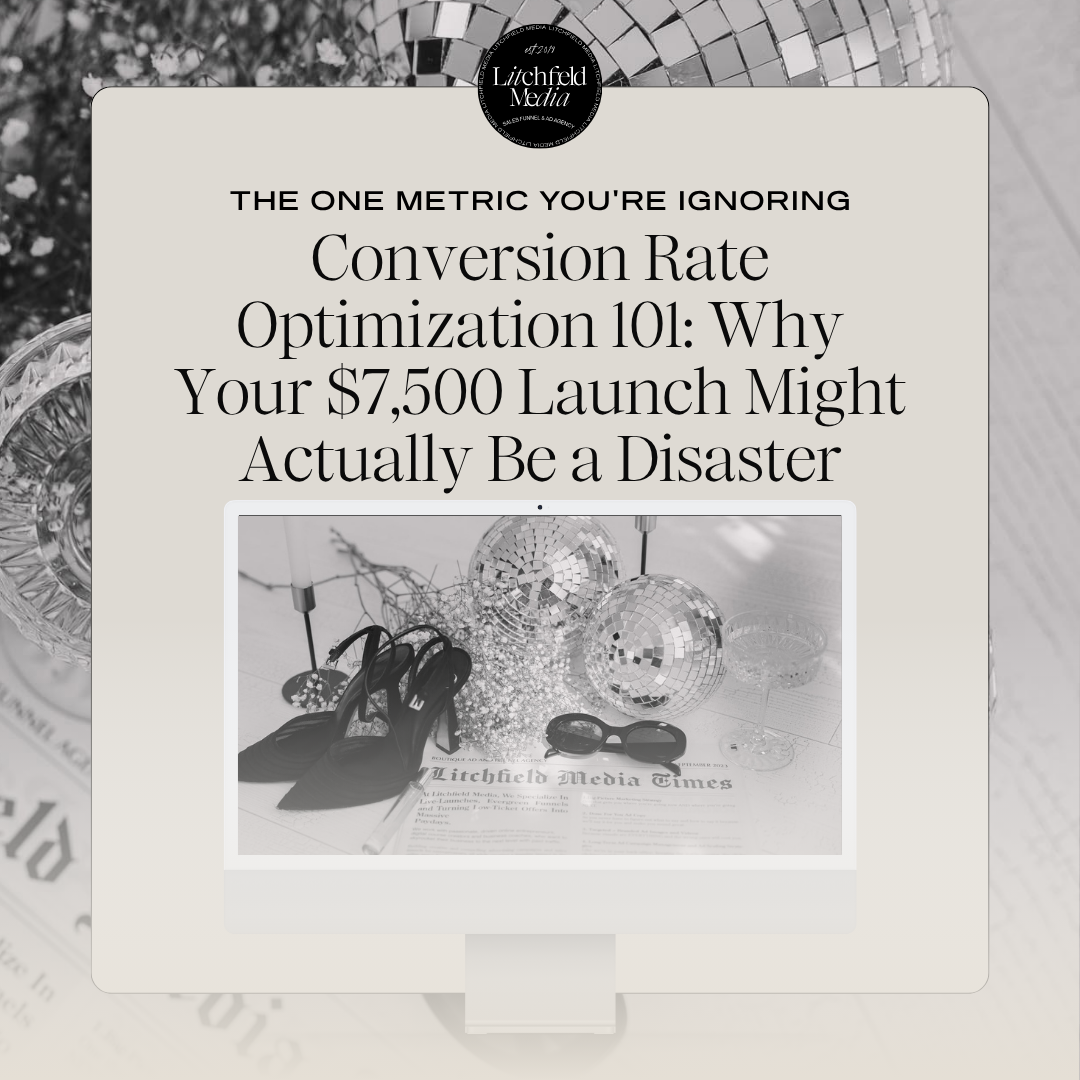I saw something on social media the other day that stopped me in my tracks.
Someone was celebrating their tripwire bringing in $7,500 in revenue. Amazing, right? I love seeing people win, so naturally I asked about their conversion rate.
Crickets.
They had no idea what their conversion rate was. They knew the total revenue, but couldn’t tell me how many people actually bought out of how many saw the offer.
And that made me genuinely nervous for them.
Revenue Without Context Is Just a Pretty Number
Here’s the problem: Revenue alone tells you nothing about whether your funnel is actually working or if you just got lucky with traffic volume. This is why conversion rate optimization matters more than you think.
Let me break this down with real math:
Scenario A: 1,000 people saw the offer, 77 bought at $97 each = $7,469 revenue
Conversion rate: 7.7% (incredible performance!)
Scenario B: 5,000 people saw the offer, 77 bought at $97 each = $7,469 revenue
Conversion rate: 1.5% (needs serious work)
Same revenue. Completely different stories.
In Scenario A, you’ve got a funnel that’s working beautifully. Double your traffic, you’ll likely double your sales. In Scenario B? You’ve got a leaky bucket hemorrhaging potential customers.
Most people celebrating Scenario B don’t even know they’re in trouble until they try to scale and wonder why throwing more money at ads isn’t working.
The Conversion Rate Formula You Need to Know
This is exactly why understanding conversion rate optimization is critical before you ever run ads. You need to know your numbers inside and out.
The Formula: (Number of purchases ÷ Number of people who saw the offer) × 100
Tripwire Conversion Rate Benchmarks:
- 3-5% = Solid performance
- 1-2% = Needs optimization
- Under 1% = Something’s broken (offer, audience, or messaging)
Where to Find These Numbers:
- Purchases: Your payment processor (Stripe, PayPal, etc.)
- Traffic/Page Views: Google Analytics or your landing page platform
Why Conversion Rate Optimization Matters More Than Revenue
When you know your conversion rate, you can predict growth with confidence. If you’re converting at 7% and want to hit $15,000 next month, you know you need roughly 2,200 people to see your offer. Now you can work backwards to figure out your traffic and email strategy.
Without that conversion rate? You’re flying blind, hoping to recreate success you don’t understand.
I’ve seen too many businesses plateau because they were celebrating revenue wins without understanding the mechanics behind them. They’d hit a good month, then struggle for three months trying to figure out what they did differently.
Your Action Plan: Calculate Your Baseline
Here’s your homework this week: Go calculate the conversion rate for your last offer, course launch, or service pitch. Whether it’s high or low, at least you’ll know where you stand.
Because here’s the truth about conversion rate optimization – a 1.5% conversion rate isn’t a failure if you know that’s where you’re starting. It’s data. It tells you exactly where to focus your optimization efforts.
You can improve a number you’re tracking. You can’t improve a number you don’t know exists.
The Bottom Line
Not knowing your conversion rate transforms revenue into meaningless vanity metrics instead of the foundation for sustainable growth.
When you understand your conversion metrics, you can:
- Predict future revenue with accuracy
- Know exactly how much traffic you need to hit goals
- Identify specific optimization opportunities
- Scale with confidence instead of hope
- Stop the feast-or-famine revenue cycle
Revenue might feel good to celebrate, but conversion rate optimization is what builds sustainable, scalable businesses.
If you’re done flying blind with your funnel metrics, the Social Funnel Formula teaches you how to set up proper tracking and conversion rate optimization systems so you can predict (and scale) your growth.
So tell me: do you actually know your conversion rate, or are you just celebrating pretty numbers?

